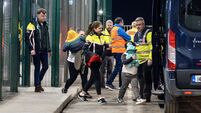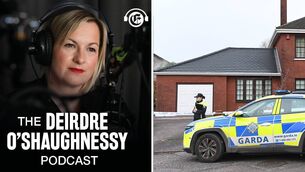Covid-19: Outside learning can be a breath of fresh air for students
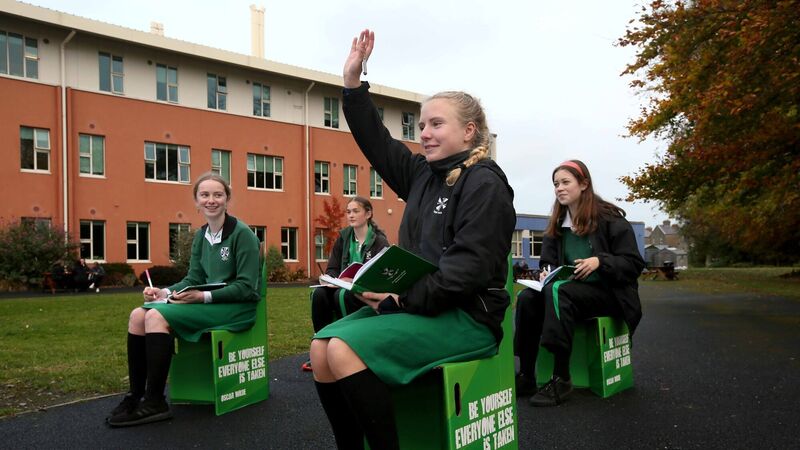
Pictured outside in the fresh air observing Global Outdoor Classroom Day are Muckross Park College students, from left, Maeve Kernan, Olivia O’Donnell, Ava Maleady and Milly Eustace sitting on 100% biodegradable Popchairs. Picture: Mark Stedman
Lessons learned about the design of schools following the 1918 flu pandemic have been forgotten in the last 40 or 50 years, UCD’s Orla Hegarty tells , with many children being educated in prefabs and school buildings which lack cross-ventilation.
COMBINING fresh air with education during a health crisis is not a new concept — open-air schoolrooms were present throughout Europe and America amid pandemics in the early 20th century.
Originally, these classrooms were built around the idea that good ventilation, as well as outdoor exposure, would help prevent the spread of TB.
Now in 2020, the importance of ventilation, fresh air, and the classroom in a pandemic is once again being considered.
There is still much to discover about Covid-19, but one thing we do know is that it does not seem to like the outdoors. Out of 318 outbreaks examined in China, just one could be traced back to transmission in an outdoor space.
On the other hand, activities involving the “forceful expulsion” of air, like singing, loud excessive talking, and high-energy fitness routines have been associated with outbreaks.
When it comes to indoors, ventilation is also considered by the World Health Organization as an important factor in preventing the virus from spreading, although it does not see it as the only defence.
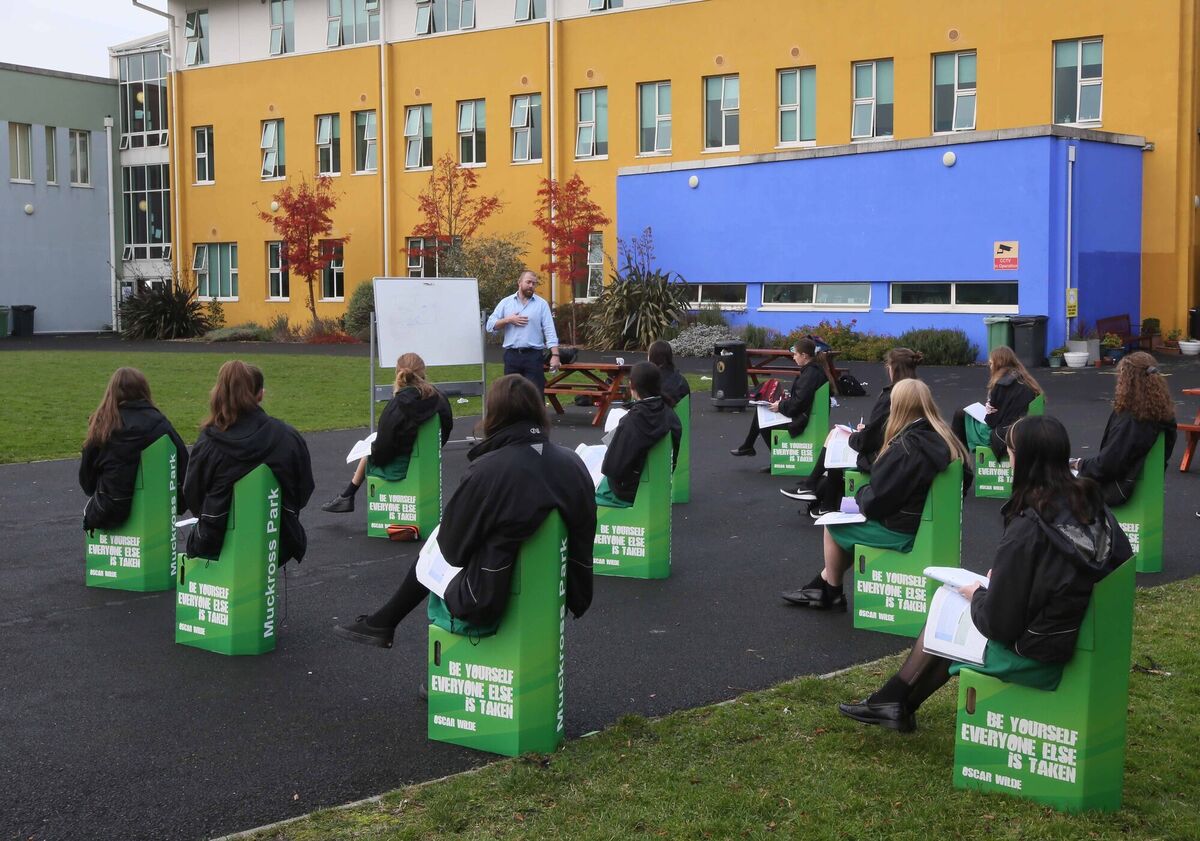
For schools, it recommends fresh, clean air, as well as increasing ventilation through natural means — ie open windows — or failing that, through a mechanical system, but preferably without the recirculation of air.
“Always try to avoid the recirculation of air,” WHO director Dr Maria Neira said recently. When this is unavoidable, systems should have filters that are regularly and properly maintained and changed, she added.
Since returning to classrooms in September, schools have been proactive in getting outside as much as possible, while also letting as much fresh air into their classrooms as possible. Many leave windows and doors open throughout the day.
Some have even gone as far as building their own outdoor classrooms and learning spaces. But while fresh air in the autumn is usually a dream, the idea of an al-fresco classroom coming into the winter isn’t the most immediately appealing prospect.
Ireland is far from the Arctic, but we are well known for our tendency for miserable, damp winters where lashing rain can make it feel 10 times colder than it actually is. November has been mild so far, but that has not stopped some in schools already feeling the chill.
“By the end of the day, teeth are chattering non-stop, and so are my students',” one teacher told the Irish Examiner. In anticipation of colder weather, some schools are relaxing their uniform policies, with students permitted to wear gloves, warm hats, and winter coats in class as the weather turns. Some parents have been advised to stock up on vests and bodywarmers for their children.
But how schools will continue to manage to ensure good ventilation as we come into winter is a concern. The Teachers' Union of Ireland has warned that ventilation problems will become critical as we experience colder weather.
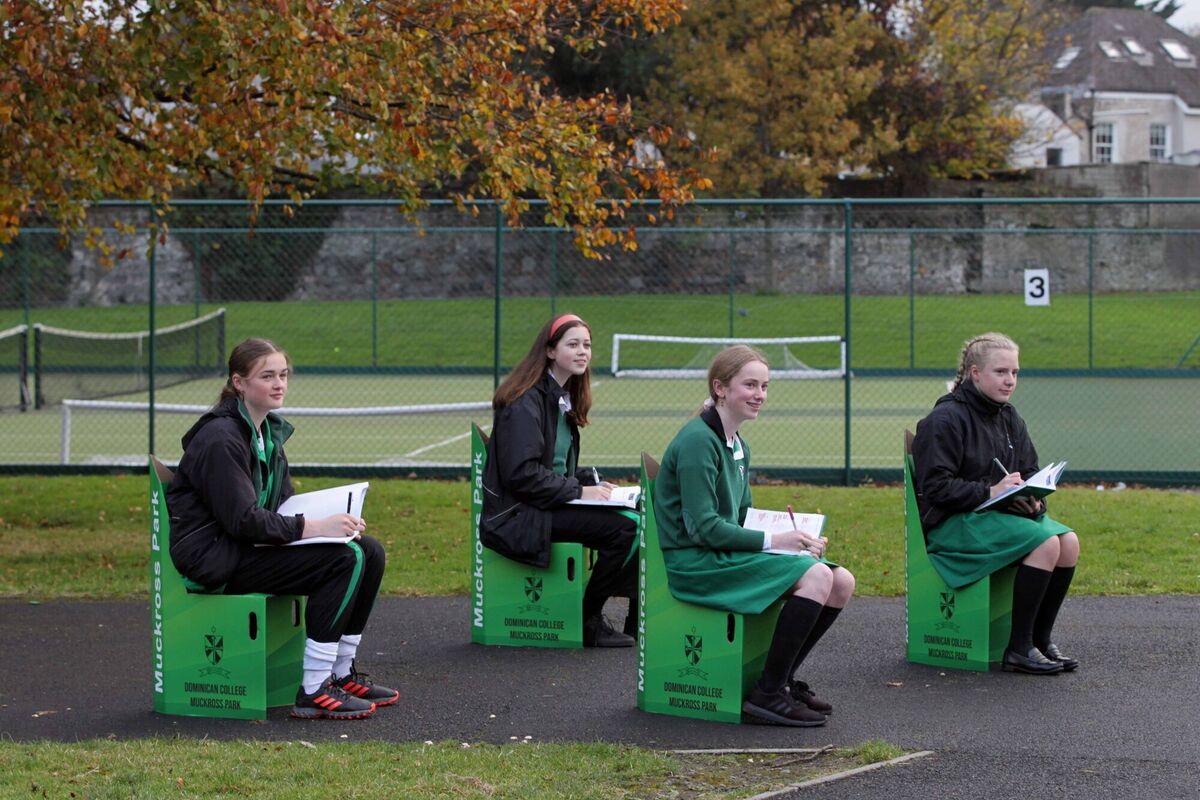
The union is concerned that many schools, particularly those based in older buildings, will require new ventilation solutions. The Irish National Teachers' Organisation has also raised concerns around managing ventilation as we head into winter. Another worry is the cost of heating.
Assistant professor at the School of Architecture at University College Dublin, Orla Hegarty, said: “I think a lot of people think buildings just get built, and then the air moves around.
“Ventilation is designed in every building. Whether it's a house or a school, with windows and wall vents, it's designed, and there are building regulation standards. I think given the experience of our schools with fire safety and structural problems, we can't assume that their ventilation standards were checked, or adequate either.
“The whole experience of the Spanish Flu influenced the design of schools for a very long time afterwards, with high ceilings and big windows and plenty of daylight. All of those lessons have been forgotten, I suppose, in the last 40 or 50 years. Particularly in the last 10 or 20 years, we've got kids in prefabs. We've got minimally designed schools with tall windows and that don't have cross ventilation.”
“Schools have done very well as a sector in terms of being proactive when it comes to ventilation. I suspect some schools probably have a physics teacher who's doing a lot of research.”
However, she is worried that in the absence of clear guidelines, some aspects may go by the wayside.
“Comfort comes into this as well," she said. "If you've got kids who have chattering teeth at 9.30am in the morning, we're going to find people saying: ‘Well, we'll just close the windows for a few minutes.
"The concern is that they might start to compromise, but they won't really know what's high-risk or what's low-risk. You can measure what is lower risk, and you can measure high-risk conditions, so people really need more specific information and advice."
There are lots of things that can be done, she added.
"You can use carbon dioxide monitors to measure the air, for example. If it gets high, it's a good indication that the room isn't being aired properly. They're quite cheap and you can monitor the room to see if there are hot spots. Then you can open the windows, or bring the kids outside for 15 minutes."






